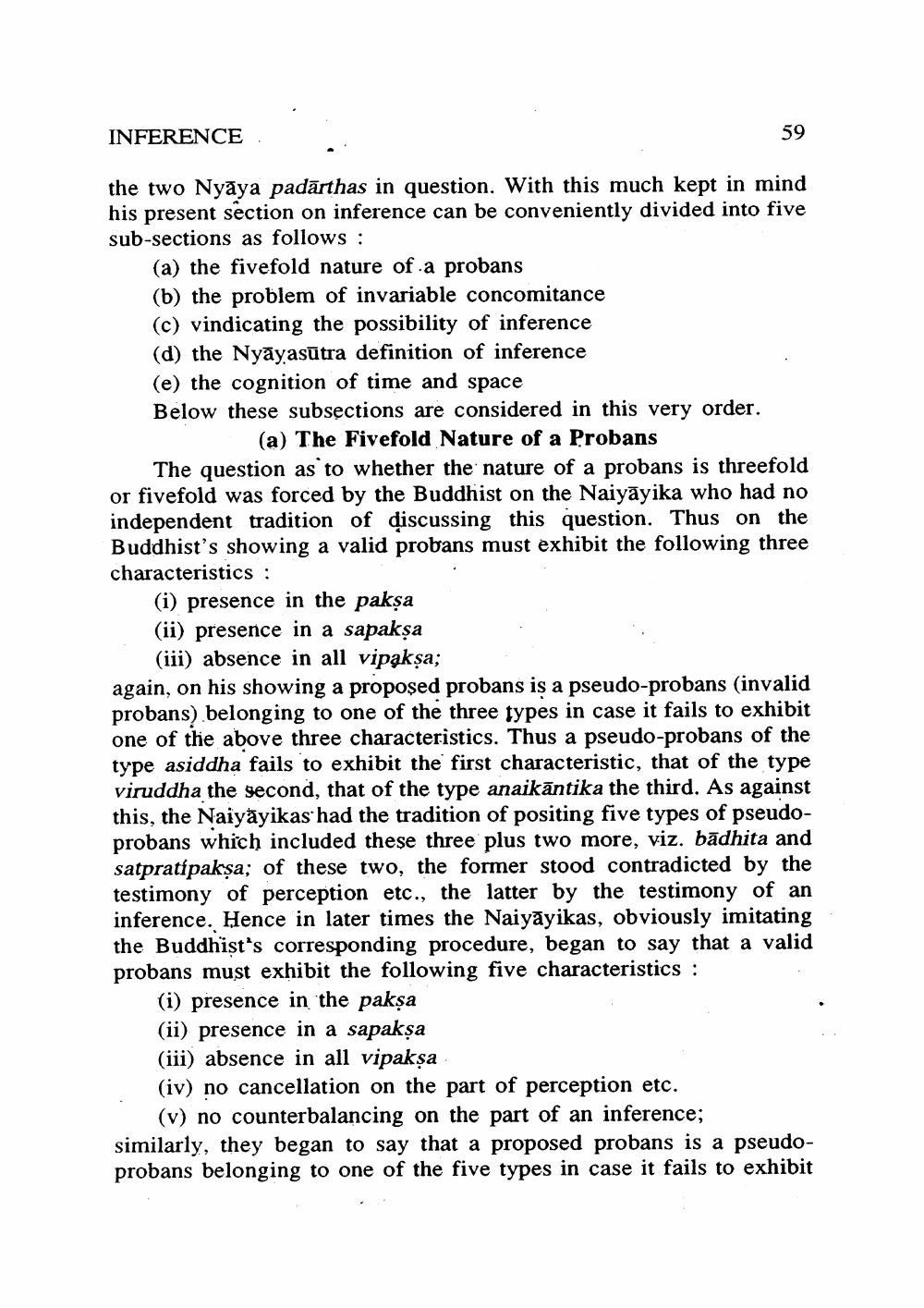________________
INFERENCE
59
the two Nyaya padarthas in question. With this much kept in mind his present section on inference can be conveniently divided into five sub-sections as follows:
(a) the fivefold nature of a probans
(b) the problem of invariable concomitance (c) vindicating the possibility of inference
(d) the Nyayasutra definition of inference
(e) the cognition of time and space
Below these subsections are considered in this very order.
(a) The Fivefold Nature of a Probans
The question as to whether the nature of a probans is threefold or fivefold was forced by the Buddhist on the Naiyayika who had no independent tradition of discussing this question. Thus on the Buddhist's showing a valid probans must exhibit the following three characteristics:
(i) presence in the paksa
(ii) presence in a sapaksa
(iii) absence in all vipakṣa;
again, on his showing a proposed probans is a pseudo-probans (invalid. probans) belonging to one of the three types in case it fails to exhibit one of the above three characteristics. Thus a pseudo-probans of the type asiddha fails to exhibit the first characteristic, that of the type viruddha the second, that of the type anaikantika the third. As against this, the Naiyayikas had the tradition of positing five types of pseudoprobans which included these three plus two more, viz. bädhita and satpratipaksa; of these two, the former stood contradicted by the testimony of perception etc., the latter by the testimony of an inference. Hence in later times the Naiyayikas, obviously imitating the Buddhist's corresponding procedure, began to say that a valid probans must exhibit the following five characteristics:
(i) presence in the paksa
(ii) presence in a sapakṣa
(iii) absence in all vipakṣa
(iv) no cancellation on the part of perception etc.
(v) no counterbalancing on the part of an inference; similarly, they began to say that a proposed probans is a pseudoprobans belonging to one of the five types in case it fails to exhibit




